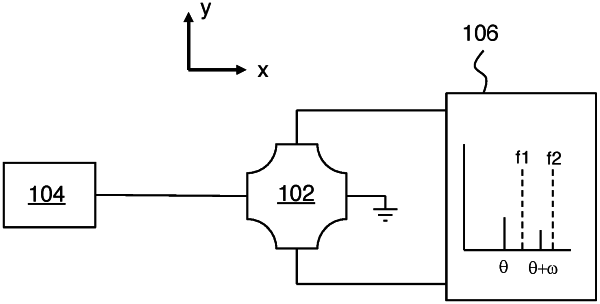| CPC G01R 33/07 (2013.01) [G01D 5/145 (2013.01); G01R 33/0029 (2013.01)] | 5 Claims |

|
1. Apparatus for performing a Hall effect measurement on a time-varying magnetic field, the apparatus comprising:
a Hall effect sensor, wherein the Hall effect sensor provides a first signal proportional to a product of applied current and the time-varying magnetic field, and wherein the Hall effect sensor provides a second signal proportional to the applied current and independent of the time-varying magnetic field;
an electrical source configured to drive the applied current through the Hall effect sensor, wherein a frequency of the applied current is f;
an electrical spectrum analyzer configured to provide an output Hall effect spectrum from the Hall effect sensor in a frequency range from f1 to f2 with f<f1<f2;
wherein f2−f1<2f, whereby the output Hall effect spectrum provides a measurement of a magnetic field spectrum in a magnetic field frequency range from f1−f to f2−f;
wherein the output Hall effect spectrum has improved magnetic field sensing accuracy due to suppression of the second signal by separating frequencies of the second signal and the output Hall effect spectrum.
|